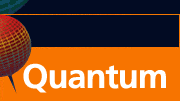CONTACTS
- Coordinator
Sebastian Deffner
-
Quantum Lunch Location:
T-Division Conference Room, TA-3,
Building 123, Room 121
 |


Quantum Institute: Visitor Schedule
The Quantum Lunch is regularly held on Thursdays in the Theoretical Division Conference Room, TA-3, Building 123, Room 121.
The organizing committee includes Malcolm Boshier (P-21), Diego Dalvit (T-4), Michael Di Rosa (C-PCS), Sebastian Deffner (T-4 & CNLS), Changhyun Ryu (P-21) , Nikolai Sinitsyn (T-4), Rolando Somma (T-4), Christopher Ticknor (T-1), and Wojciech Zurek (T-4).
For more information, or to nominate a speaker, contact Sebastian Deffner.
To add your name to the Quantum Lunch email list, contact Kacy Hopwood.
Thursday September 3, 2015
12:30 PM - 2:00 PM
Speaker: Lukasz Cincio (Perimeter Institute)
Technical Host: Sebastian Deffner
TOPIC: Emergent anyons and explicit semion wave-function for the chiral spin liquid on the Kagome lattice
Abstract
The chiral spin liquid is one of the earliest proposals for a topologically ordered phase in quantum spin systems. It was introduced by Kalmeyer and Laughlin in 1987 as the bosonic analogue of the fractional quantum Hall effect. Some models that realize chiral spin liquid have been recently proposed, but they are unlikely to be found in realistic materials. Here we find a chiral spin liquid in a physically motivated model for a Mott insulator on the Kagome lattice with broken time-reversal symmetry. We briefly describe a method of characterizing topological order from a microscopic lattice Hamiltonian based on a density matrix renormalization group. This method allows us to provide unambiguous numerical identification of the universal topological properties of the phase. We compute entanglement spectrum and topological S and T matrices to access edge physics and extract anyonic bulk excitations. Furtermore, we obtain explicit matrix-product state representations of the chiral spin liquid state, including the topologically non-trivial semionic excitation. Finally, we study their energetics as the model is tuned towards a topological phase transition.
|


